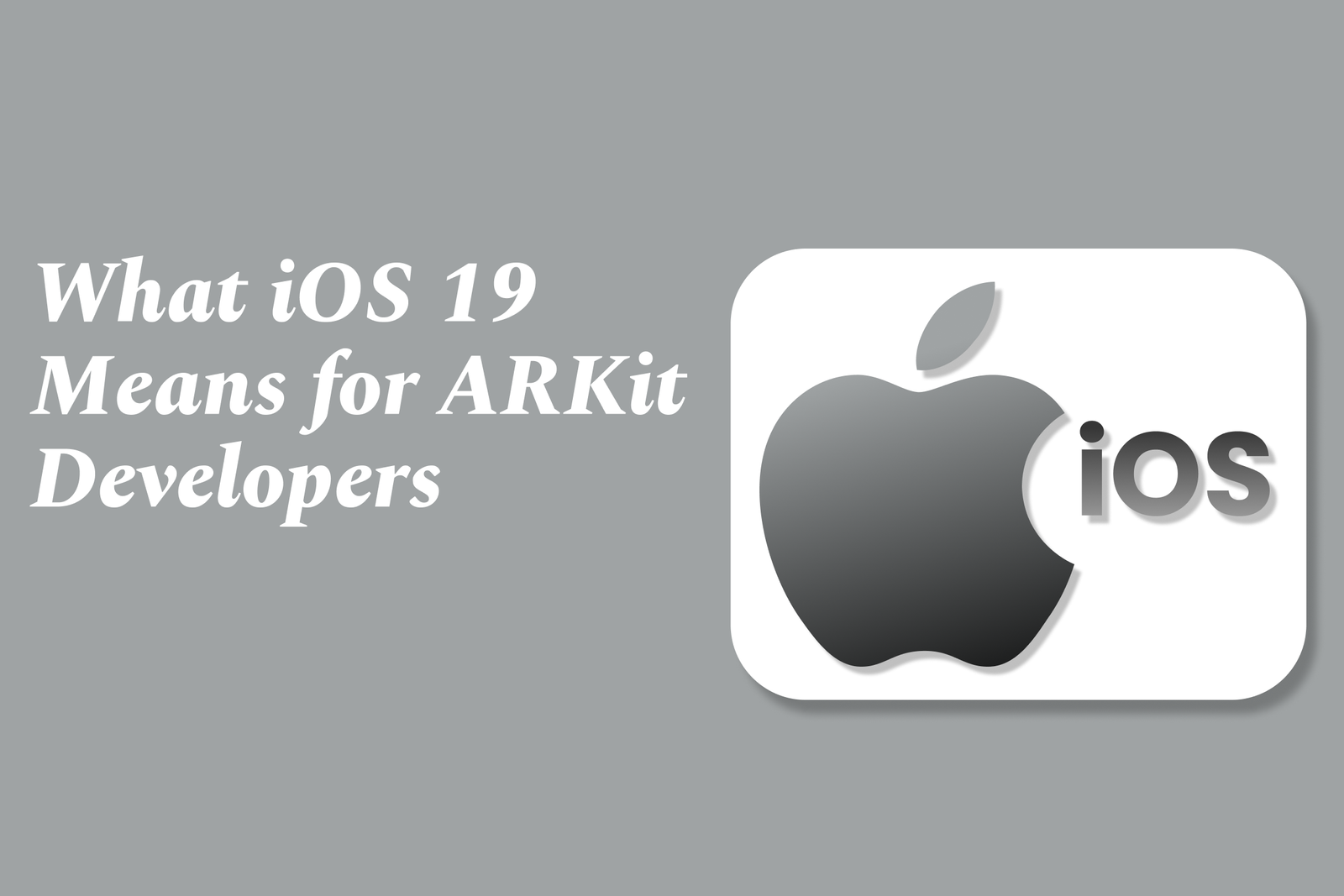What iOS 19 Means for ARKit Developers
iOS 19 brings powerful upgrades to ARKit, enhancing scene understanding, multiuser support, object tracking, and persistence. These improvements enable developers to create more immersive, accurate, and seamless AR experiences across Apple devices with better performance and privacy.
What iOS 19 Means for ARKit Developers
1 ) Enhanced ARKit Capabilities in iOS 19
With the release of iOS 19, Apple introduces significant upgrades to ARKit that empower developers to build more immersive and precise augmented reality experiences. These improvements include advanced scene understanding, enhanced motion tracking, and improved environmental recognition, which will allow AR apps to interact more naturally with the physical world.
2 ) Improved Persistent AR Experiences
iOS 19 offers better support for persistent AR, enabling apps to save and restore AR scenes more reliably across sessions and device switches. This long awaited feature addresses previous limitations where developers struggled to maintain consistent AR experiences after app restarts or device changes.
3 ) Expanded Support for Multiuser AR
The update enhances multiuser AR functionalities, allowing multiple devices to share AR experiences seamlessly with refined synchronization and spatial mapping. This paves the way for collaborative applications and shared AR content with minimal latency and higher accuracy.
4 ) New APIs for Advanced Object Recognition and Tracking
Apple introduces new APIs that offer improved object detection and tracking, including support for a broader range of real world objects and environments. Developers can now leverage machine learning models integrated deeper into ARKit to create unique interactive elements anchored precisely in real space.
5 ) Deeper Integration with VisionOS and Apple’s Ecosystem
With iOS 19, ARKit is more tightly integrated with the upcoming VisionOS and other Apple ecosystem tools, promoting cross device AR experiences. This allows developers to create flexible applications that operate seamlessly across iPhones, iPads, and future Apple AR hardware.
6 ) Performance Optimizations and Developer Tools
Apple enhances ARKit’s performance in iOS 19, ensuring smoother frame rates and lower latency for AR applications. Additionally, updated developer tools and debugging features are introduced to help streamline the development process and improve app stability.
7 ) Better Accessibility and UX Enhancements
The iOS 19 update emphasizes accessibility by introducing new user interface components tailored for AR, which help make AR applications more usable and intuitive for a broader audience, including those with disabilities.
8 ) Privacy Focused Features for AR Data
Given the sensitivity of AR data, iOS 19 incorporates new privacy protections and transparency features that give users more control over how their environment data is accessed and used by AR apps.
In summary, iOS 19 represents a substantial step forward for ARKit developers by improving persistence, multiuser capabilities, object recognition, performance, and ecosystem integration—offering more powerful tools to build innovative augmented reality experiences.
https://justacademy.in/news-detail/react-native-expo?s-new-features-you-didn?t-know-about
https://justacademy.in/news-detail/android-automotive-os-latest-developments
https://justacademy.in/news-detail/how-ios-19-supports-ultra-wideband-technology
https://justacademy.in/news-detail/flutter-for-logistics-and-delivery-apps
https://justacademy.in/news-detail/react-native-now-powers-desktop-apps
Related Posts
Java supports GDPR and data privacy by enabling secure data handling through encryption, controlled access, and precise data management. It allows developers to minimize PII exposure, ensure data confidentiality, and design workflows that comply with data protection regulations effectively.
Java code quality tools have evolved to include advanced static analysis, integrated security checks, and AI-powered code reviews. These updates help developers detect bugs, enforce coding standards, and enhance security, streamlining the development process and improving overall code reliability.
Java remains a cornerstone in big tech companies, evolving with modern features like records, pattern matching, and virtual threads. Its robust ecosystem, enhanced performance, and growing AI integrations keep it vital for both legacy systems and innovative new projects.
Java and CI/CD pipeline optimizations streamline Java application development by automating builds, tests, and deployments. They improve efficiency through parallelization, caching, and secure secrets management, enabling faster feedback loops and more reliable, scalable software delivery.
Java supports modern cryptography standards through its flexible Java Cryptography Architecture (JCA), enabling integration of advanced algorithms like AES, EdDSA, and post-quantum tools. Libraries like Bouncy Castle offer FIPS-certified, hardware-accelerated implementations for secure development.
Java 23 enhances record patterns by enabling concise, direct destructuring of record components within pattern matching, simplifying type checks and data extraction. This improvement boosts code readability and expressiveness by reducing boilerplate in handling immutable data classes.
Java remains a top choice for mobile app backends, powering scalable, secure, and high-performance server-side solutions. Latest trends include cloud-native microservices, reactive programming, and enhanced JVM optimizations, enabling efficient, flexible, and robust mobile backend development.
Java SE 24 and LTS Java SE 21 offer enhanced features and performance, while Apache Spark 4.0.0 introduces Scala 2.13 support and advanced ML and SQL capabilities. Together, they empower developers to build scalable, high-performance data applications with modern tools.
JUnit 5 modernizes Java testing with a modular architecture, improved assertions, and seamless Java 8+ support. Beyond JUnit, tools like Mockito and AssertJ enhance mocking and assertions, creating a powerful, flexible ecosystem for writing clean, efficient Java unit tests.
Java plays a pivotal role in cloud automation tools by providing a robust, platform-independent language used to build scalable automation frameworks like Jenkins and Selenium, enabling efficient CI/CD pipelines, testing, and orchestration across diverse cloud environments.










